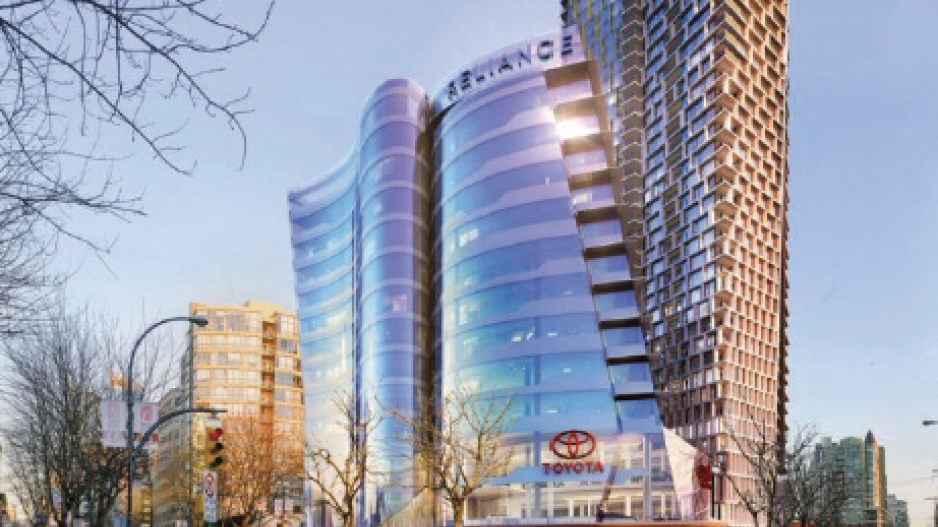Rampant land speculation fuelled by an avalanche of offshore money has driven new condominium prices to the tipping point, a senior real estate analyst warns.
“At a certain point buyers will just say ‘no,’” said Michael Ferreira, managing principal of Urban Analytics Inc., following his address last week to the Urban Development Institute, Pacific region.
Ferreira said “an immense amount of offshore capital” flowing mostly from mainland China into multi-family land speculation has nearly doubled the price of land this year and could drive future condominium prices into the stratosphere.
So far, buyers appear eager to pay what are already record prices, Ferreira told a lunch meeting packed with members of the development community.
In 2015’s first nine months, 2,000 more new condominiums sold in Metro Vancouver than in the same period in 2014, a 20% increase. The standing inventory of completed and unsold concrete condominiums has plunged to just 70 units, despite more than 2,500 being completed since January.
Ferreira added that in downtown Vancouver, only six new highrise concrete condos remain unsold.
He said 21,600 new Metro Vancouver concrete condominiums are being marketed now for completion in 2018, 87% of which are already pre-sold at record prices.
Average new concrete condominiums downtown are now selling for $1,100 per square foot and can top $825 per square foot along the Cambie corridor.
Burrard Place, by Reliance Properties and Jim Pattison Developments Ltd., has sold 350 condominiums since its launch this year, with half the units selling for more than $1 million and per-square-foot prices averaging $1,200.
According to the Colliers LandShare survey, land prices for potential highrise condominium sites in Vancouver’s downtown and west side were in the $175 to $200 per buildable square foot range at this time last year. Recent land prices are now being bid up to $300 and $400 per buildable square foot. Offshore land speculators have been outbidding local condo developers, Ferreira said, and the traditional pro-forma calculations no longer apply.
“The new rule is there are no rules,” he said.
Letter to the editor
In response to the article titled "Land Speculators Rendering Condo Prices Unsustainable" posted to BIV.com on November 3 and that appeared in the November 2 print edition of Business in Vancouver, this is to avoid misunderstanding on topics discussed in the article and present the correct market statistics.
The increased competition for development properties in the City of Vancouver, and to a lesser extent the adjacent municipalities, has led to a rapid rise in land values in a short period of time. There are a few isolated areas in the City of Vancouver where the sale price of development properties has doubled in the past year. However, this amount of increase has not occurred in all Vancouver neighbourhoods, nor is there any evidence of it in other parts of the Metro Vancouver in this short time span. While there appears to be no shortage of capital (both local and increasingly from off‐shore), willing to invest in these properties, history has shown that substantial increases in the price of any asset or commodity in short periods of time do not continue forever and are thus considered unsustainable in the longer term.
Rising land costs combined with escalating construction costs and strong consumer demand (driven by a mix of off‐shore and local capital) are putting pressure on new home prices, particularly in the urban markets of Vancouver, Burnaby and North Vancouver. In a few cases, these rising prices have exceeded previous highs, but that is typically due to the product form being new to a neighbourhood undergoing a revitalization and change in use; the Cambie Corridor.
Nevertheless, the increase in new home pricing is accelerating in a few neighbourhoods, and, as history has proven, eventually prices reach a point at which buyers stop participating in the market. When that occurs it is impossible to predict. As I’ve often said when asked to predict the timing of a market correction, "I would be a very rich man if I knew that." It would be irresponsible for anyone to predict a shift in consumer behaviour, particularly as it relates to buying real estate in Metro Vancouver.
In the meantime, the strong consumer demand for new condominiums and townhomes is creating a supply crisis in many parts of the region, which must be addressed by the industry and municipalities to address home affordability. Consider the following:
·There are just 235 completed and unsold concrete condominium homes across Metro Vancouver, in spite of there being 3,057 units scheduled to complete in the first nine months of 2015.
·To put this into context, nearly 6,900 concrete condominium homes were sold in the first nine months of 2015.
·Of the 165 unsold condominium units in Downtown Vancouver, just six were completed and unsold at the end of the third quarter of 2015.
·87% of the more than 21,600 concrete condominium units scheduled to complete by the end of the third quarter of 2018 have already been sold. Some of the projects these units are in have yet to break ground.
These statistics collected by Urban Analytics analysts led me to conclude that municipalities and the industry are not reacting to the strong demand for new multi‐family homes in many parts of Metro Vancouver, which will only increase the value of these new homes and the properties they’re built on further and challenge the development industry to be resilient in finding new opportunities as they have repeatedly done with each cycle of change in the past.
Michael Ferreira
Managing principal, Urban Analytics




